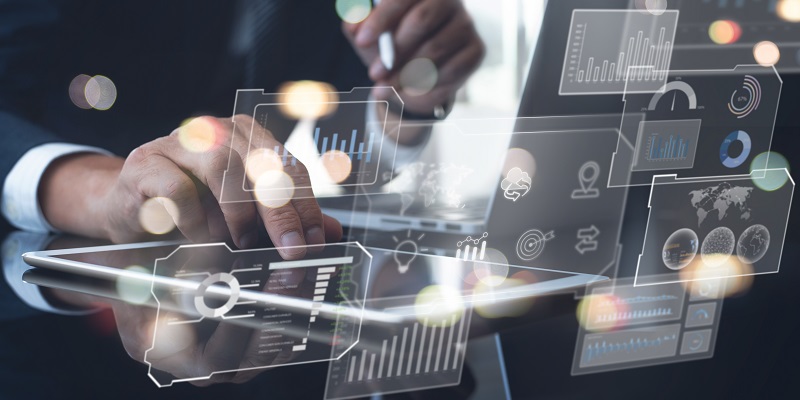Data has become an integral part of modern society, and with it, the need for extracting meaningful insights and analysis has never been more critical. The rise of Big Data and advanced analytics techniques has transformed the field of data analysis, leading to the emergence of Data Science as a distinct discipline. This article aims to provide an overview of Big Data, Data Analytics, and Data Science, and highlight their interconnectedness and complementary nature.
The definition of Big Data is a large set of structured, semi-structured, or unstructured data that can be analyzed to reveal patterns, trends, and associations, especially relating to human behavior and interactions. It often involves the processing of data using advanced technologies such as machine learning, artificial intelligence, and predictive analytics to uncover insights that would otherwise be difficult or impossible to identify.
“Big Data” refers to the massive volume, velocity, and variety of information that is generated every day. This information comes from various sources, such as social media, IoT devices, sensors, and online transactions. Big Data technologies involve specialized tools to store, process, and analyze this information, which is too vast and complex for traditional data management systems. These technologies include Hadoop, Spark, and other platforms capable of processing large datasets.
Overview of Data Analytics
Data Analytics is the process of using statistical methods to extract meaningful insights from data. The focus is on identifying patterns, correlations, trends, and other meaningful statistics to help businesses make data-driven decisions. Data Analytics involves collecting, cleaning, and transforming data before performing analyses using tools such as Excel, R, and Python. Data Analytics is prevalent in businesses and industries that rely on data-driven insights to make decisions.
Data Science is a multidisciplinary field that involves the use of statistical and computational methods to extract insights and knowledge from data. It encompasses several areas such as mathematics, statistics, computer science, and domain expertise to analyze and interpret complex data sets. The aim of data science is to discover patterns, trends, and insights from data that can be used to inform decision-making and solve real-world problems.
Data Science is an interdisciplinary field that combines techniques from statistics, mathematics, and computer science to extract knowledge and insights from data. It is an umbrella term that encompasses the entire spectrum of extracting knowledge from data, incorporating Big Data Analytics and Data Analytics techniques. Data Scientists engage in activities such as data cleaning, feature engineering, creating predictive models, and communicating insights to stakeholders. The role of Data Scientists is to formulate the right questions, select appropriate methodologies, and interpret the results to solve complex business problems.
Responsibilities of Data Scientists
Since data science is an interdisciplinary field, data scientists must possess a broad set of skills to manage the entire data science pipeline. They are responsible for setting up and maintaining data infrastructure, identifying standards and best practices, iterating through different models, and interpreting the results to deliver actionable insights. They use various programming languages and tools such as R, Python, SQL, Hadoop, and Spark. They also engage in data visualization to communicate their findings to non-technical stakeholders and decision-makers.
Technologies used in Big Data, Data Analytics, and Data Science
Big Data Analytics utilizes technologies like Hadoop and Spark for processing large datasets. On the other hand, Data Analytics and Data Science employ statistical analysis, various analytical techniques, and programming languages like Python, R, and SQL. These technologies enable them to manipulate, transform, and clean data before conducting advanced analysis.
Differences between Data Analytics and Data Science
Data Science involves a broader and more interdisciplinary process of developing predictive models, analyzing large and complex data sets, and delivering actionable insights. Data Analytics, on the other hand, focuses on extracting meaningful insights from data using statistical methods. While both fields may seem to overlap, Data Science differs from Data Analytics as it also involves activities such as data cleaning, feature engineering, and model selection.
The Interconnectedness of Big Data, Data Analytics, and Data Science
Despite their differences, big data, data analytics, and data science share overlapping areas such as data collection and storage, data preprocessing, programming languages and tools, machine learning techniques, and data visualization. Big data provides the foundation for both data analytics and data science, while data analytics provides a subset of the tools used for data science.
Overlapping Areas in the Fields
Data Collection and Storage: Big Data provides storage and collection capabilities for large data sets that can be used in analytics and data science. Data analytics and data science involve identifying and selecting useful data sets for analysis.
Data Preprocessing is important for Data Analytics and Data Science as it requires cleaning, filtering and transforming data before any analysis is carried out. Preprocessing involves data integration and can be a tedious and time-consuming process, especially for large data sets.
The Complementary Nature of Methodologies and Approaches
While Big Data, Data Analytics, and Data Science differ in their methods and approaches to analyzing data, they are interconnected and often overlap in practice. The fields complement each other, with Big Data providing foundational concepts and infrastructure for both fields. Data Analytics and Data Science contribute to a more in-depth analysis and understanding of data, while Big Data makes it possible to store and process large datasets. Additionally, Data Analytics and Data Science are both used for data-driven decision-making, while Big Data provides the data that drives such decisions.
In conclusion, the rise of Big Data and advanced analytics techniques has transformed the field of data analysis, leading to the emergence of Data Science as a distinct discipline. The fields of Big Data, Data Analytics, and Data Science interact and complement each other, allowing businesses to extract meaningful insights from data and make data-driven decisions. The overlapping areas between these fields highlight the interconnectedness of the fields and their complementary nature in extracting value and insights from data.

